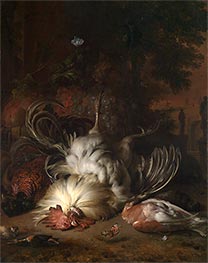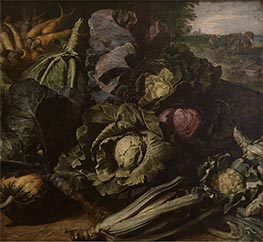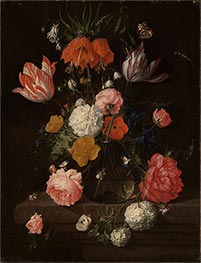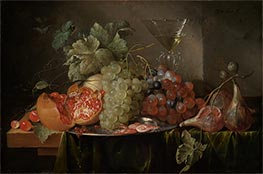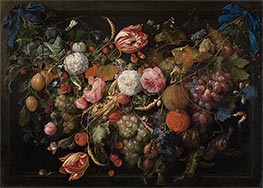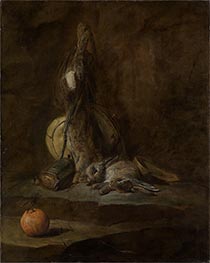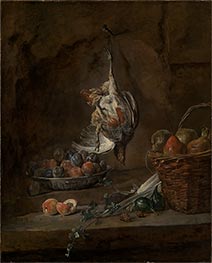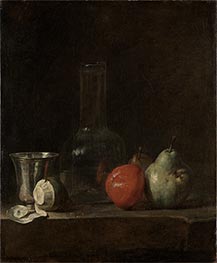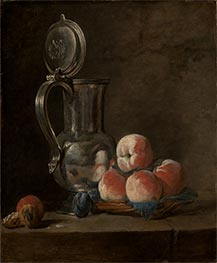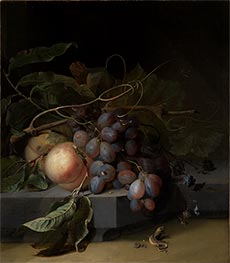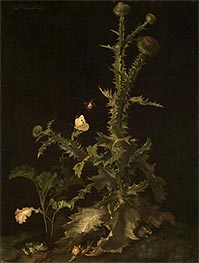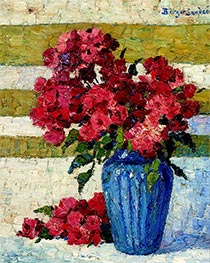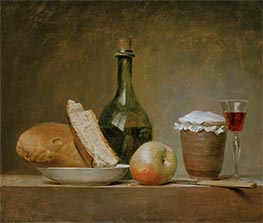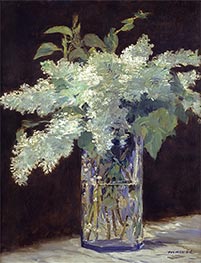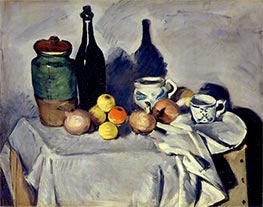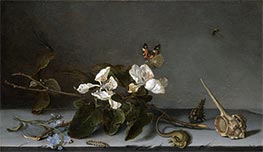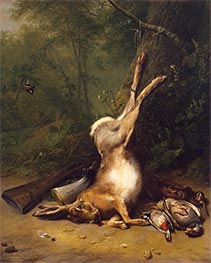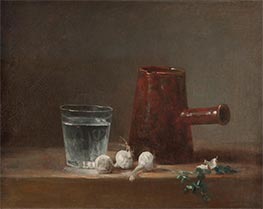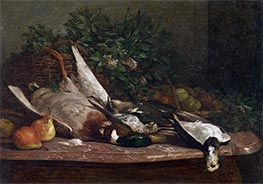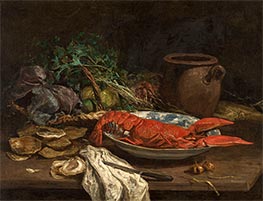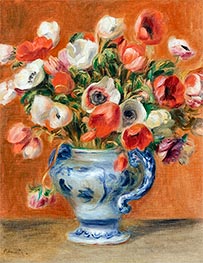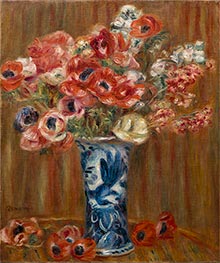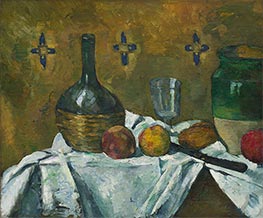Still Life Painting Reproductions - Page 7
Still life painting is a genre of art that depicts inanimate objects, such as flowers, fruits, vases, books, and other household items, arranged in a composition. The genre has a long history dating back to ancient civilizations, with examples found in Egyptian tomb paintings and Greek and Roman vase paintings. During the Renaissance, still life paintings gained popularity in the Netherlands and later spread to other parts of Europe. The genre was used to make symbolic and moralistic statements, as well as to show off the wealth and taste of the patrons. In the 19th and 20th centuries, still life paintings became an important genre in the development of modern art, with the artists experimenting with form, color, and texture. Today, still life painting continues to be a popular genre, with artists exploring new interpretations and styles.
During the Dutch Golden Age, still life paintings became highly valued, as they often incorporated elements of luxury and prosperity, such as fine silver and glassware, exotic fruits, and beautiful flowers. Artists like Jan van Huysum and Rachel Ruysch were known for their skill in painting highly detailed and lifelike still life compositions.
In the 19th century, the still life genre evolved again with the advent of Impressionism. Artists like Édouard Manet and Pierre-Auguste Renoir incorporated new techniques and styles, using loose brushwork and vibrant colors to capture the fleeting effects of light and color.
The still life genre has also been influenced by movements such as Cubism and Surrealism, with artists like Georges Braque and Salvador Dalí using the form to explore abstract concepts and dreamlike imagery.
Today, still life remains a popular genre, with contemporary artists continuing to push the boundaries of what is possible within the form. From photorealistic paintings to abstract compositions, the still life genre continues to evolve and inspire new generations of artists.
During the Dutch Golden Age, still life paintings became highly valued, as they often incorporated elements of luxury and prosperity, such as fine silver and glassware, exotic fruits, and beautiful flowers. Artists like Jan van Huysum and Rachel Ruysch were known for their skill in painting highly detailed and lifelike still life compositions.
In the 19th century, the still life genre evolved again with the advent of Impressionism. Artists like Édouard Manet and Pierre-Auguste Renoir incorporated new techniques and styles, using loose brushwork and vibrant colors to capture the fleeting effects of light and color.
The still life genre has also been influenced by movements such as Cubism and Surrealism, with artists like Georges Braque and Salvador Dalí using the form to explore abstract concepts and dreamlike imagery.
Today, still life remains a popular genre, with contemporary artists continuing to push the boundaries of what is possible within the form. From photorealistic paintings to abstract compositions, the still life genre continues to evolve and inspire new generations of artists.
page 7 of 55
SKU: JWX-18911
Jan Weenix
Original Size: 99 x 78 cm
Staatliche Kunsthalle Karlsruhe Germany
Jan Weenix
Original Size: 99 x 78 cm
Staatliche Kunsthalle Karlsruhe Germany
SKU: SFR-18897
Frans Snyders
Original Size: 144 x 157 cm
Staatliche Kunsthalle Karlsruhe Germany
Frans Snyders
Original Size: 144 x 157 cm
Staatliche Kunsthalle Karlsruhe Germany
SKU: HEC-18893
Cornelis de Heem
Original Size: 58.8 x 44.8 cm
Staatliche Kunsthalle Karlsruhe Germany
Cornelis de Heem
Original Size: 58.8 x 44.8 cm
Staatliche Kunsthalle Karlsruhe Germany
SKU: HJD-18892
Jan Davidsz de Heem
Original Size: 37 x 47.3 cm
Staatliche Kunsthalle Karlsruhe Germany
Jan Davidsz de Heem
Original Size: 37 x 47.3 cm
Staatliche Kunsthalle Karlsruhe Germany
Fruit Still Life with Filled Wine Glass 1649
Jan Davidsz de Heem
Oil Painting
$1814
$1814
Canvas Print
$54.89
$54.89
SKU: HJD-18891
Jan Davidsz de Heem
Original Size: 35.4 x 53.3 cm
Staatliche Kunsthalle Karlsruhe Germany
Jan Davidsz de Heem
Original Size: 35.4 x 53.3 cm
Staatliche Kunsthalle Karlsruhe Germany
SKU: HJD-18890
Jan Davidsz de Heem
Original Size: 58.8 x 80 cm
Staatliche Kunsthalle Karlsruhe Germany
Jan Davidsz de Heem
Original Size: 58.8 x 80 cm
Staatliche Kunsthalle Karlsruhe Germany
Still Life with Dead Rabbit c.1728
Jean-Baptiste-Simeon Chardin
Oil Painting
$1114
$1114
Canvas Print
$66.25
$66.25
SKU: CHJ-18888
Jean-Baptiste-Simeon Chardin
Original Size: 92 x 74 cm
Staatliche Kunsthalle Karlsruhe Germany
Jean-Baptiste-Simeon Chardin
Original Size: 92 x 74 cm
Staatliche Kunsthalle Karlsruhe Germany
Still Life with Dead Partridge c.1728
Jean-Baptiste-Simeon Chardin
Oil Painting
$1369
$1369
Canvas Print
$66.86
$66.86
SKU: CHJ-18887
Jean-Baptiste-Simeon Chardin
Original Size: 92 x 74 cm
Staatliche Kunsthalle Karlsruhe Germany
Jean-Baptiste-Simeon Chardin
Original Size: 92 x 74 cm
Staatliche Kunsthalle Karlsruhe Germany
Still Life with Glass Bottle and Fruits c.1728
Jean-Baptiste-Simeon Chardin
Oil Painting
$819
$819
Canvas Print
$68.67
$68.67
SKU: CHJ-18886
Jean-Baptiste-Simeon Chardin
Original Size: 55.7 x 46 cm
Staatliche Kunsthalle Karlsruhe Germany
Jean-Baptiste-Simeon Chardin
Original Size: 55.7 x 46 cm
Staatliche Kunsthalle Karlsruhe Germany
Still Life with Pewter Jug and Peaches c.1728
Jean-Baptiste-Simeon Chardin
Oil Painting
$929
$929
Canvas Print
$68.52
$68.52
SKU: CHJ-18885
Jean-Baptiste-Simeon Chardin
Original Size: 56 x 46 cm
Staatliche Kunsthalle Karlsruhe Germany
Jean-Baptiste-Simeon Chardin
Original Size: 56 x 46 cm
Staatliche Kunsthalle Karlsruhe Germany
SKU: MIG-18884
Abraham Mignon
Original Size: 40.5 x 35.5 cm
Staatliche Kunsthalle Karlsruhe Germany
Abraham Mignon
Original Size: 40.5 x 35.5 cm
Staatliche Kunsthalle Karlsruhe Germany
SKU: AWV-18883
Willem van Aelst
Original Size: 75 x 57 cm
Staatliche Kunsthalle Karlsruhe Germany
Willem van Aelst
Original Size: 75 x 57 cm
Staatliche Kunsthalle Karlsruhe Germany
SKU: BZE-18861
Birger Sandzen
Original Size: 40.6 x 33 cm
Private Collection
Birger Sandzen
Original Size: 40.6 x 33 cm
Private Collection
SKU: VCA-18824
Anne Vallayer-Coster
Original Size: 27.5 x 32.5 cm
Gemaldegalerie Berlin Germany
Anne Vallayer-Coster
Original Size: 27.5 x 32.5 cm
Gemaldegalerie Berlin Germany
SKU: MED-18823
Edouard Manet
Original Size: 54 x 42 cm
Gemaldegalerie Berlin Germany
Edouard Manet
Original Size: 54 x 42 cm
Gemaldegalerie Berlin Germany
SKU: CEZ-18800
Paul Cezanne
Original Size: 64.5 x 81.5 cm
Gemaldegalerie Berlin Germany
Paul Cezanne
Original Size: 64.5 x 81.5 cm
Gemaldegalerie Berlin Germany
Quince Blossom Branch and Snail Shells c.1620/40
Balthasar van der Ast
Oil Painting
$1081
$1081
Canvas Print
$54.89
$54.89
SKU: AST-18796
Balthasar van der Ast
Original Size: 22 x 38.3 cm
Gemaldegalerie Berlin Germany
Balthasar van der Ast
Original Size: 22 x 38.3 cm
Gemaldegalerie Berlin Germany
SKU: BCK-18702
Barend Cornelius Koekkoek
Original Size: 97 x 80 cm
The State Hermitage Museum St. Petersburg Russia
Barend Cornelius Koekkoek
Original Size: 97 x 80 cm
The State Hermitage Museum St. Petersburg Russia
Glass of Water and Coffeepot c.1761
Jean-Baptiste-Simeon Chardin
Oil Painting
$499
$499
Canvas Print
$54.89
$54.89
SKU: CHJ-18660
Jean-Baptiste-Simeon Chardin
Original Size: 32.4 x 41.2 cm
Carnegie Museum of Art Pittsburgh USA
Jean-Baptiste-Simeon Chardin
Original Size: 32.4 x 41.2 cm
Carnegie Museum of Art Pittsburgh USA
Still Life with Game, Fruits, and Flowers c.1854/57
Eugene Boudin
Oil Painting
$1409
$1409
Canvas Print
$58.08
$58.08
SKU: EBU-18659
Eugene Boudin
Original Size: 83.8 x 109.2 cm
Carnegie Museum of Art Pittsburgh USA
Eugene Boudin
Original Size: 83.8 x 109.2 cm
Carnegie Museum of Art Pittsburgh USA
SKU: EBU-18658
Eugene Boudin
Original Size: unknown
Carnegie Museum of Art Pittsburgh USA
Eugene Boudin
Original Size: unknown
Carnegie Museum of Art Pittsburgh USA
SKU: RPA-18531
Pierre-Auguste Renoir
Original Size: 42.2 x 33 cm
Private Collection
Pierre-Auguste Renoir
Original Size: 42.2 x 33 cm
Private Collection
SKU: RPA-18530
Pierre-Auguste Renoir
Original Size: 55.6 x 46.7 cm
Private Collection
Pierre-Auguste Renoir
Original Size: 55.6 x 46.7 cm
Private Collection
SKU: CEZ-18377
Paul Cezanne
Original Size: 46.2 x 55.2 cm
Solomon R. Guggenheim Museum New York USA
Paul Cezanne
Original Size: 46.2 x 55.2 cm
Solomon R. Guggenheim Museum New York USA
